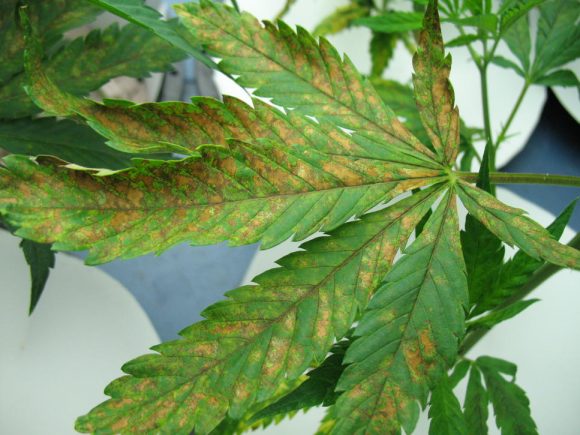
How to Avoid and Solve the Most Common Problems When Growing Medical Cannabis
Growing medical cannabis can be a rewarding and therapeutic activity, but it also comes with its own challenges and difficulties. Cannabis plants are sensitive and complex organisms that require specific conditions and care to thrive and produce high-quality buds. If these conditions are not met, the plants may suffer from various problems that can affect their health, growth, and yield.
[mermaid] graph LR A[Nutrient Deficiency] –> B(Causes of Nutrient Deficiencies) B –> C[Poor soil quality] B –> D[pH imbalance] B –> E[Overwatering/Underwatering] F[Symptoms of Nutrient Deficiencies] –> A G[How to Fix Nutrient Deficiencies] –> A [/mermaid]In this article, we will discuss some of the most common problems that people have growing medical cannabis and how to avoid and solve them. These problems are:
- Nutrient deficiencies
- Spider mite infestation
- Overwatering or underwatering
- White powdery mildew
- Windburn
Nutrient Deficiencies
Cannabis plants need a balanced amount of nutrients to grow properly and be healthy. If they lack or have too much of certain nutrients, they may show signs of distress such as discoloration, wilting, curling, or spotting of leaves. Some of the essential nutrients for cannabis plants are nitrogen, phosphorus, potassium, calcium, magnesium, sulfur, iron, zinc, copper, manganese, molybdenum, and boron. Each nutrient has a specific role and deficiency symptoms that can be identified and corrected by adjusting the pH and fertilizer levels of the soil or water.
 To avoid nutrient deficiencies, it is important to use a good quality soil or medium that has the right texture, drainage, and organic matter content. It is also advisable to use a suitable fertilizer that matches the stage of growth of the plants (vegetative or flowering) and follow the manufacturer’s instructions on how much and how often to apply it. Additionally, it is essential to monitor the pH of the water and the soil or medium regularly, as it affects the availability of nutrients to the roots. The ideal pH range for cannabis plants is between 6.0 and 7.0 for soil and between 5.5 and 6.5 for hydroponics.
To avoid nutrient deficiencies, it is important to use a good quality soil or medium that has the right texture, drainage, and organic matter content. It is also advisable to use a suitable fertilizer that matches the stage of growth of the plants (vegetative or flowering) and follow the manufacturer’s instructions on how much and how often to apply it. Additionally, it is essential to monitor the pH of the water and the soil or medium regularly, as it affects the availability of nutrients to the roots. The ideal pH range for cannabis plants is between 6.0 and 7.0 for soil and between 5.5 and 6.5 for hydroponics.
To solve nutrient deficiencies, it is necessary to identify which nutrient is lacking or excess by observing the symptoms on the leaves and comparing them with a deficiency chart. Then, it is possible to adjust the pH and the fertilizer accordingly to restore the balance of nutrients in the plants. Sometimes, it may also be helpful to flush the soil or medium with plain water to remove any salt buildup or nutrient lockout that may be preventing the uptake of nutrients.
Also be sure to check out our cananbis stress page for good pictures of the nutrient defficiencies.
Spider Mite Infestation
Spider mites are tiny pests that can breed very easily and damage cannabis plants by sucking their sap and leaving behind webs and specks on the leaves. They can also transmit diseases and reduce the quality and yield of the buds. Spider mites thrive in hot and dry conditions, so it is important to keep the humidity and temperature under control and check the plants regularly for signs of infestation.
To prevent spider mite infestation, it is advisable to keep the humidity between 40% and 50% and the temperature between 20°C and 26°C in the grow room or tent. It is also recommended to prune the plants to increase airflow, remove any dead or infected leaves, and avoid overwatering or overfeeding them. Furthermore, it is beneficial to introduce natural predators such as ladybugs or predatory mites that can feed on spider mites and keep their population under control.
To get rid of spider mite infestation, it is possible to use natural or organic sprays such as neem oil or insecticidal soap that can kill or repel spider mites without harming the plants or humans. These sprays should be applied thoroughly on both sides of the leaves every few days until no signs of infestation remain. Alternatively, it is possible to use chemical pesticides that are specifically designed for spider mites and cannabis plants, but these should be used with caution as they may have negative effects on the environment, health, and quality of the buds.
Overwatering or Underwatering
Cannabis plants need a proper balance of water to grow well and avoid stress. Overwatering can cause root rot, nutrient lockout, mold, and fungal infections. Underwatering can cause wilting, drooping, slow growth, and reduced yields.
To avoid these problems, it is advisable to water the plants only when the top inch or two of the soil feels dry to the touch, and to use pots with good drainage holes. The amount and frequency of watering may vary depending on the size of the plant, the stage of growth, the type of soil or medium, and the environmental conditions. To solve these problems, it is possible to adjust the watering schedule and technique according to the needs of the plants. It is also important to check the roots for any signs of rot or damage and remove any affected parts if necessary.
White Powdery Mildew
White powdery mildew is a fungal disease that affects cannabis plants by forming a white coating on the leaves and stems. It can reduce photosynthesis, stunt growth, and lower the potency and flavor of the buds. White powdery mildew thrives in humid and crowded environments with poor air circulation and low light intensity. To prevent or treat this disease, it is important to keep the humidity below 50%, prune the plants to increase airflow, avoid wetting the leaves when watering or spraying, use fans and filters to improve ventilation, and apply organic fungicides such as baking soda or milk if needed.
To avoid white powdery mildew, it is advisable to choose resistant strains of cannabis that can tolerate higher humidity levels and fungal infections. It is also recommended to sterilize the grow room or tent and all the equipment before and after each crop to prevent any spores from spreading. Furthermore, it is beneficial to inspect the plants regularly and remove any infected leaves or branches as soon as possible to prevent the disease from spreading to other plants.
To treat white powdery mildew, it is possible to use natural or organic remedies that can kill or inhibit the fungus without harming the plants or humans. Some of these remedies are baking soda, milk, apple cider vinegar, hydrogen peroxide, neem oil, and garlic. These remedies should be diluted in water and sprayed on the affected areas every few days until no signs of infection remain. Alternatively, it is possible to use chemical fungicides that are specifically designed for white powdery mildew and cannabis plants, but these should be used with caution as they may have negative effects on the environment, health, and quality of the buds.
Windburn
Windburn is a type of stress caused by excessive wind exposure that can damage cannabis plants by tearing or curling their leaves, breaking their branches, or knocking off their flowers. Windburn can also increase water loss through transpiration and make the plants more vulnerable to pests and diseases. To avoid windburn, it is advisable to protect outdoor plants with windbreaks such as fences or hedges, stake or support tall or heavy plants to prevent them from falling over, move indoor plants away from fans or air vents that create strong drafts.
To prevent windburn, it is advisable to choose sturdy strains of cannabis that can withstand high winds and harsh weather conditions. It is also recommended to acclimate the plants gradually to the outdoor environment by exposing them to increasing amounts of wind and sun over a period of time. Furthermore, it is beneficial to water the plants more frequently and add mulch or compost to the soil to retain moisture and prevent evaporation.
To treat windburn, it is possible to repair any physical damage caused by the wind by trimming off any torn or dead leaves or branches, applying tape or glue to any cracks or splits in the stems, and tying up any loose or sagging parts of the plants. It is also important to provide the plants with adequate nutrients and water to help them recover from stress and heal faster. Additionally, it may be helpful to apply foliar sprays such as seaweed extract or aloe vera juice to soothe and hydrate the leaves.
Paz’s Conclusion
Growing medical cannabis can be a challenging but rewarding endeavor that requires attention and care. By learning how to identify and solve some of the most common problems that affect cannabis plants, such as nutrient deficiencies, spider mite infestation, overwatering or underwatering, white powdery mildew, and windburn, you can ensure your plants’ health, growth, and yield.

